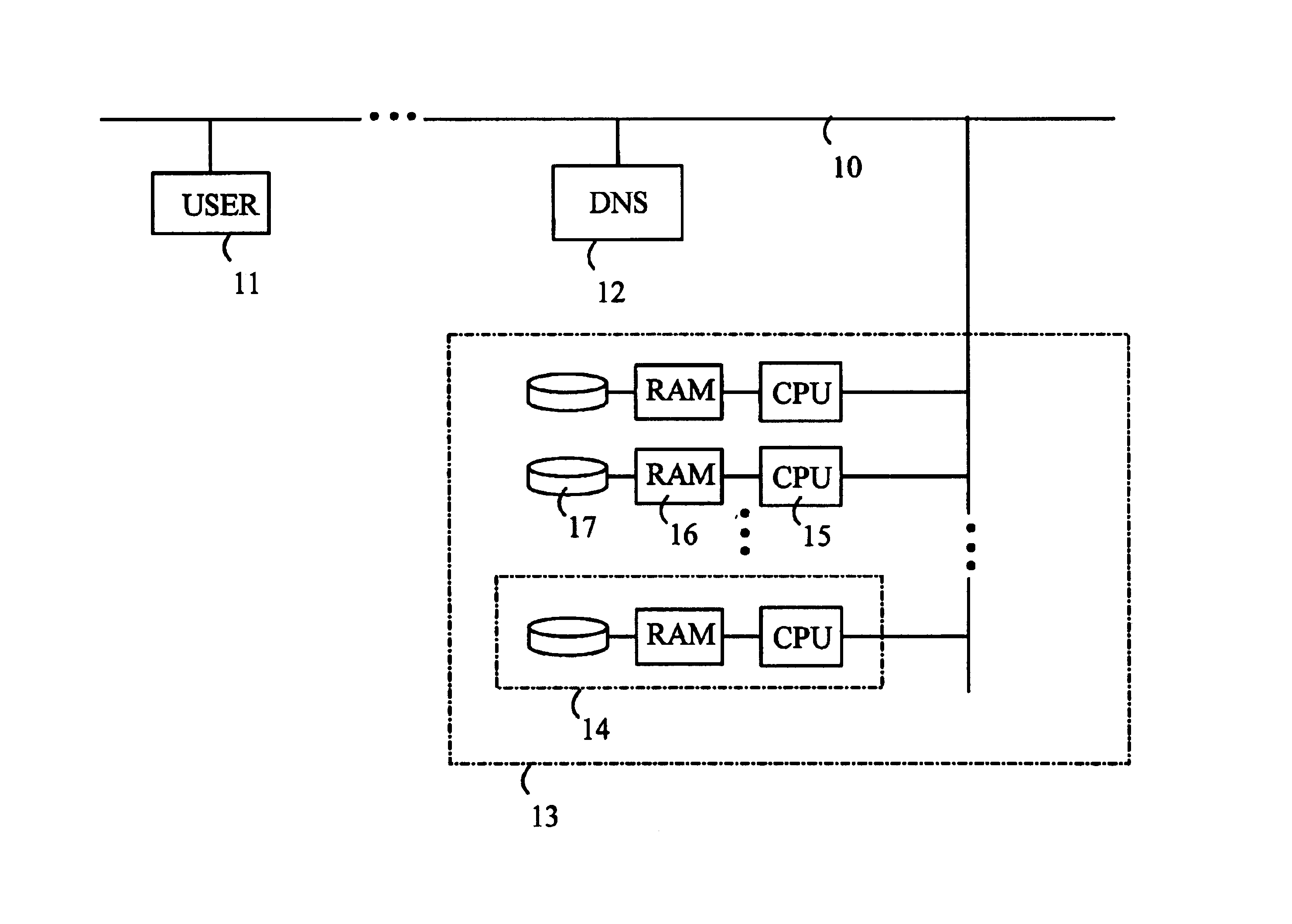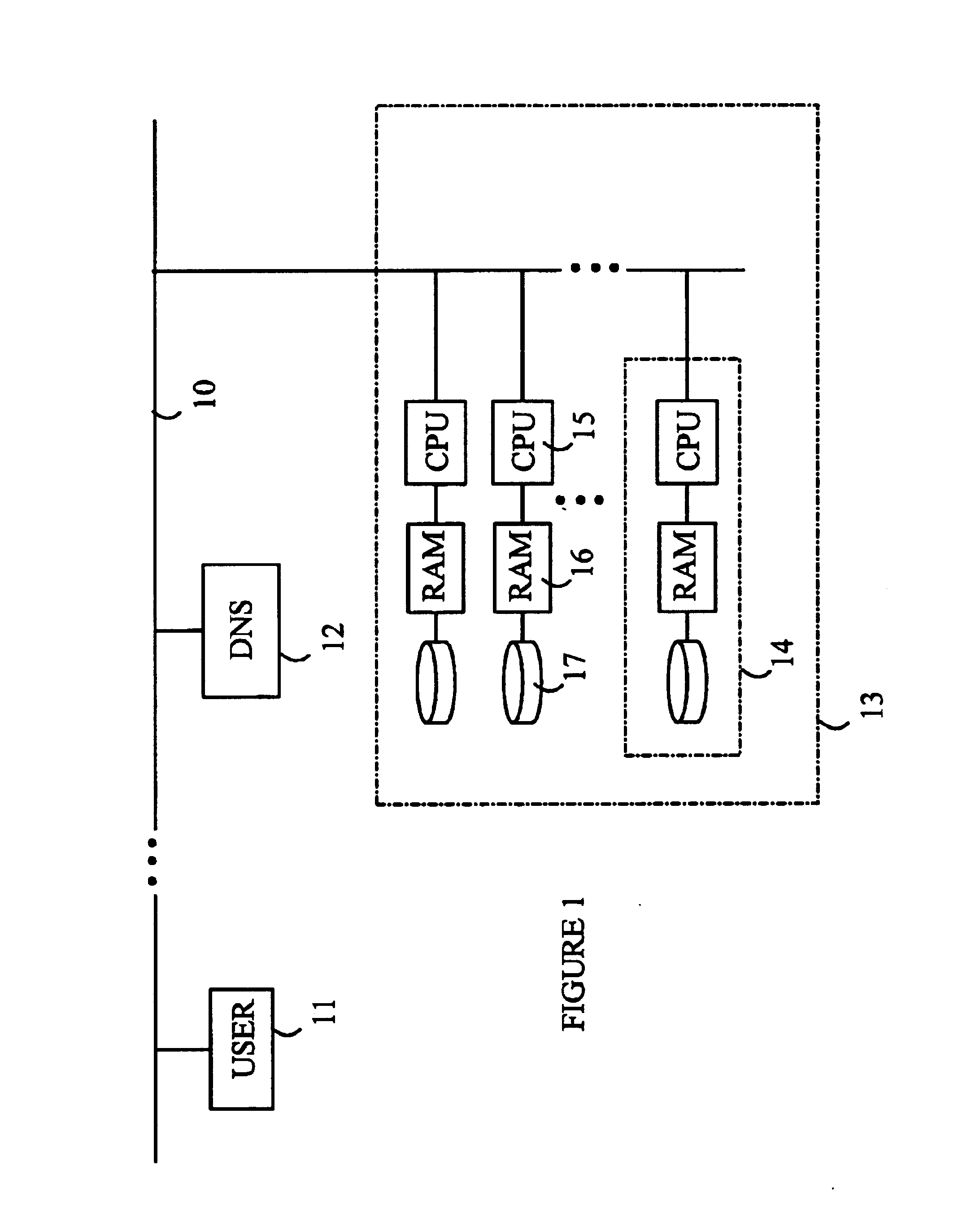Method for allocating web sites on a web server cluster based on balancing memory and load requirements
a web server cluster and memory allocation technology, applied in the field of computer servers, can solve the problems of poorer service, the most significant latency associated with cache misses, and the change in the computation needs of various sites
- Summary
- Abstract
- Description
- Claims
- Application Information
AI Technical Summary
Benefits of technology
Problems solved by technology
Method used
Image
Examples
third embodiment
the present invention is based on the assumption that the best performance is achieved when the “most popular” bytes reside in memory, and that the operating system replacement policy ensures that the most popular bytes are kept in memory at all times. Given these assumptions, it can be easily seen that when the sites are distributed on a cluster of identical nodes with total memory Ram, the best performance is achieved when the most popular bytes are distributed equally on all nodes.
Given the optimum cut-off frequency fropt the contribution of site s to the most popular Ram bytes is C(s,fropt), and thus the working set requirement of site s is W(s)=C(s,fropt).
The remaining bytes for site s are not among the most popular Ram bytes and are expected to be fetched from the disk. It should be noted that the computational workload needed to retrieve a file from disk is greater than workload imposed by supplying the file from memory. Accordingly, the estimate for A(s) is also updated in t...
PUM
 Login to View More
Login to View More Abstract
Description
Claims
Application Information
 Login to View More
Login to View More - R&D
- Intellectual Property
- Life Sciences
- Materials
- Tech Scout
- Unparalleled Data Quality
- Higher Quality Content
- 60% Fewer Hallucinations
Browse by: Latest US Patents, China's latest patents, Technical Efficacy Thesaurus, Application Domain, Technology Topic, Popular Technical Reports.
© 2025 PatSnap. All rights reserved.Legal|Privacy policy|Modern Slavery Act Transparency Statement|Sitemap|About US| Contact US: help@patsnap.com



